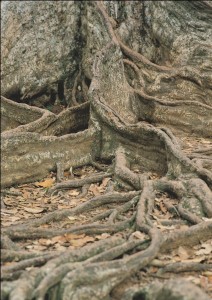Hi Everyone,
This week’s article gives some basic pointing out instructions for how we can transform our ordinary, deluded self sense into the universal or expanded self sense of a Bodhisattva, someone whose primary motivation is to liberate all living beings from their pain and bestow upon them lasting freedom and happiness. It is a little longer than I anticipated, but it explains the journey in its ‘bare bones’ so to speak, without any unnecessary complexity.
Yours in the spirit of universal love and compassion,
Toby

Article of the Week:
Meditation on the No Self as the Gateway to the Expanded Self and to Universal Love and Compassion
In my previous article on “the Essential Teaching of the Buddha” I outline three basic meditational themes of suffering, impermanence and no self. What I want to do below is to explain I as simple terms as possible how to identify the experience of no self in meditation and show how it can lead into the experience of an expanded self and of universal love and compassion. In Buddhist terms someone who has realized this expanded self is often referred to as a Bodhisattva, a person who works continuously for the liberation of others motivated by his or her universal compassion.
The stages of the meditation are described in short, contemplative “pointing out” instructions that you can then just gently work thorough at your own pace, using each sentence as a platform for your own practical investigation.
Identifying our everyday idea of self
The first thing that we need to do is to observe our mind and see how we habitually conceive of a quite solid, tangible ‘self’. It appears to have a permanent, fixed identity, and to exist somewhere within the mixture of our physical appearance and mental and emotional ‘personality’. It feels very real, and to have both physical and mental form.
So the first exercise is to get used to watching our sense of self as we go through our day; who is it that is angry or stressed? Who gets embarrassed by the complement from our attractive work colleague? Who feels depressed or elated?
Realizing that the everyday self does not exist in the way we think
If the everyday self or ego exists in the way we think it does as some kind of inherent, fixed form, then we should be able to find it and point to it somewhere within the collection of our body and mind. However, briefly put, if you look at the moment to moment stream of your mind and body, all you will find is a stream of continuously changing phenomenon that are not the self. For example the brain is a continuously changing and transforming physical organ that is not the self. The thinking and feeling that arise from having a brain (and upon which we often develop a strong sense of self) is also continuously changing and transforming. There is nothing within the stream of our thoughts and feelings that stays the same for long enough to be a stable basis for saying “that is me”.
So, the second part of the meditation is to take our time and investigate the moment to moment flow of our body-mind, and see very clearly from our own experience that there is nothing there that provides a suitable basis for a permanent or fixed ‘I’.
Resting in the experience of no self
The third stage of the meditation is simply to absorb the significance of the first two stages, to recognize that where we habitually assumed there was a self (in the body-mind), there is in fact no permanent fixed self. There is just a continuously flowing and transforming stream of mental and physical phenomena that is not the self!
In meditation we can consolidate this by deliberately dropping our habitual sense of self, and just resting in the awareness of the absence of a fixed, permanent self within either our body or our mind.
Identifying the witness or observer self
There is a third aspect of our moment our moment experience that does not change, and upon which on a deeper level our self sense is based upon. This is the moment to moment experience of awareness itself. This awareness has two basic qualities; firstly it functions to know, or be aware of things, and secondly it has no form, no mental or physical characteristics. It is clear open and space like.
The fourth stage of our meditation is simply to recognize this pure awareness, and to rest in this open, space-like awareness in meditation.
Contemplating the qualities of the witness self
We could say that this observer, or witness self is our true self, or real self. But it is completely different from the self that we usually think of as being “me”.
For one thing it has no individualizing characteristics. Because it has no form it has nothing within it to distinguish us from anyone else. It is just pure, luminous spacious awareness.
Secondly, because it has no form, the witness self that lies within ‘me’ is also the same as the witness self that lies within ‘you’, or ‘they, or ’them’ or ‘others’. In this sense the witness self (which is still a ‘no self’ in the sense of having no individualizing characteristics) is the universal self, the ‘God that lies within the heart of all’, and from which all of creation arises and disintegrates from moment to moment.
Expanding our sense of self to include all living beings
So, if we then take our witness self, or pure awareness as our true ‘self’ we can expand our self sense infinitely to include all living beings since they all have at the heart of their being that same pure awareness. In this sense meeting other people is no different in essence from meeting ourselves, the outer appearance is different, but the essence is the same!
At this stage of the meditation our focus becomes the recognition that the pure self-awareness that we are witnessing is actually a universal or expanded self, encompassing not just one person but infinite living beings, human, animal or otherwise.
Developing love and compassion for others
On the basis of recognizing our expanded self we can then begin to develop natural and appropriate empathic love and compassion for other living beings, not because we feel as if we ‘should’ but because we can experientially recognize them in essence as being our true or real self.
The vow of the Bodhisattva
Naturally arising from this universal love and compassion comes the wish to liberate all living beings (who are aspects of our own self) from suffering, and give them lasting freedom and happiness. Our intention in life begins to orientate itself around the vow of the Bodhisattva, to quote the Ninth century Buddhist teacher Shantideva:
“May I be a protector to those without protection,
A leader for those who journey,
And a boat, a bridge, a passage
For those desiring the further shore.
May the pain of every living creature
Be completely cleared away.
May I be the doctor and the medicine
And may I be the nurse
For all sick beings in the world
Until everyone is healed.”
© Toby Ouvry 2011, you are welcome to use or share this article, but please cite Toby as the source and include reference to his website www.tobyouvry.com
 Meditation Class 14th December:
Meditation Class 14th December:






